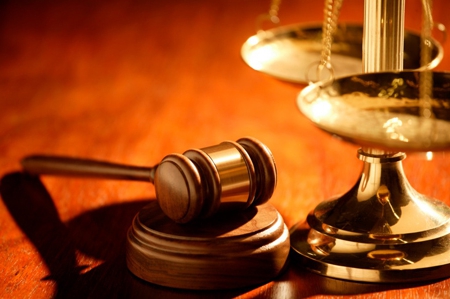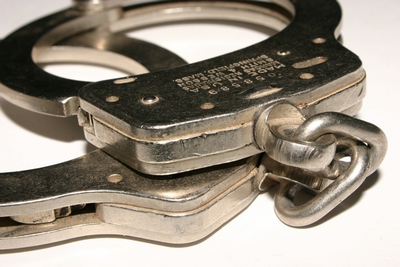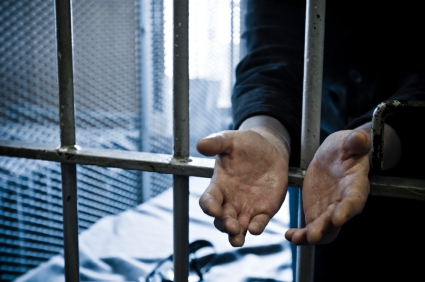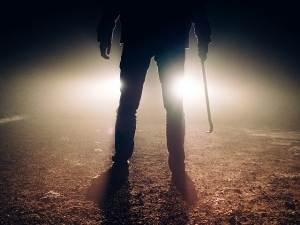The grounds and limits of criminal liability, like any other, are determined by the interaction of the three main elements of human existence. Their interconnection provides a triple social and moral correction of personality. This complex includes its own volitional regulation, the influence of society and the impact of state regulations. Let us further consider what constitutes criminal liability. The basis and types of it will also be described in the article. 
General information
Criminal liability takes place in the field of relevant legal relations. Within this area, a certain social connection is established between people. One of its most important features is the specific duty of interacting entities to observe strictly defined behavior. Criminal legal provisions are organically combined with established generally binding social norms.
Objective side
Criminal liability should be considered both from the side of the incentive motive of behavior, and in terms of measures required from the subject of behavior. In other words, it acts as a form of social and legal control in the framework of the correlation of possible and due, necessity and free will. In this regard, she has a central place in the criminal regulatory regulatory mechanism. Its objective side is that the generally binding requirement, which is enshrined in the relevant norm, is determined by the current laws of the social life of people. So criminal law stimulates, encourages responsible behavior of subjects in public relations. Considering the category from this position, it should be noted that this environment cannot be considered something external with respect to the personality of a person. It acts as an integral social and legal phenomenon based on a moral principle.
Subjective side
It is expressed in the fact that criminal law prescriptions due to social interactions are refracted in the psychology and consciousness of people, in the assimilation of norms and the development of positive social motivation. Regulation, therefore, includes the will and consciousness of the individual entering into communication with another. It, in turn, is impossible outside these elements. In the absence of consciousness and will, only impulsive and instinctive contacts can arise, through which it is impossible to form a system of relations. In other words, the characterization of the essence of interactions between individuals within the framework of the criminal law sphere will to a large extent depend on the orientation of the individual in the world of social values, which are protected by relevant laws, people's abilities and capabilities for selective behavior regarding them. 
Philosophical aspect of the problem
General grounds for criminal liability are examined from two sides. The philosophical aspect of the problem comes first. It consists in the fact that the grounds for applying criminal liability take place only when the subject had the freedom to choose his own behavior in a particular situation. This means that he could act as required by law, but ignored this opportunity, violating the order. In this case, the question arises of the degree of human freedom in choice. Opinions on this subject were divided into three areas.
Supporters of the first believe that a person is in the harsh power of external circumstances. They determine the behavior of the individual, forced to do so, but not otherwise.Advocates of a different view view the problem from the opposite side. In their view, human behavior is never conditioned by anything. The individual is everywhere and always free to behave as he wants. Proponents of the third trend deny indeterministic and fatalistic views, calling them unscientific. They recognize determinism - the causal relationship of the will and consciousness, human behavior, its surrounding conditions, social experience, needs. An individual cannot but depend on external factors - on natural and social processes. However, this phenomenon does not exclude its possibility of choosing one or another variant of behavior in a particular situation.
Legal basis of criminal liability
This aspect of the problem consists in identifying specific acts and conditions under which negative consequences arise for the guilty subject. In Art. 8 of the Criminal Code established defining categories. According to the norm, the basis of criminal liability is an act in which there are all the signs by which the corpus delicti established under the Criminal Code is determined. This position allows us to draw several conclusions. The first is that the only and sufficient basis for criminal liability is the presence of corpus delicti in perfect deed. This category is not disclosed in any of the Criminal Code. However, the corpus delicti as a concept is explained by the criminal law theory.
In particular, it is a complex of subjective and objective signs that describe a dangerous act - a crime. The Criminal Code establishes specific models of behavior that fall under the influence of norms. By means of objective signs, social relations that protect criminal law, the act itself, as well as its consequences, are illustrated. Subjective criteria serve to describe guilt, purpose, motive of crime as well as the requirements that must be met by the person who makes it. 
Important point
The corpus delicti may be present only in the act. This means that thoughts, worldviews, views, beliefs, whatever they may be, will not act as grounds for criminal liability, provided that they are expressed in any form other than actions. Only when they are committed can the consequences provided for in the norms for the subject arise.
Public danger
This category also acts as an integral element of the basis of criminal liability. In other words, the subject must disrupt social relations or create a threat to this. In Art. 8 there is no indication of the social danger of the act. Nevertheless, the need for the presence of this feature follows from other articles of the Code. So, Art. 2 says that the Criminal Code establishes what dangerous acts are considered crimes for the state, society, personality. In Art. 5 mentions the presence of guilt. Its establishment for a specific dangerous act and certain negative consequences for the person who committed it acts as the basis of punishment. Criminal liability, therefore, manifests its subjective and objective side.
The specifics of the act
One nuance should be noted. If the Code has established that the act is criminal, this does not mean that it endowed it with danger to society. In this case, the opposite is true. The act is therefore recognized as a crime because, regardless of the will of the legislator, it already has a danger to society. The task of the rulemaker in this case is to identify this threat and find the most effective way to deal with it. If there is no public danger, then there is no corpus delicti and, therefore, the grounds for criminal prosecution. This is directly stated by Art. 14, part 2 of the Criminal Code. Other Codex standards, which define circumstances precluding a criminal act. 
Establishment of the basis of criminal liability in the Russian Federation
To identify the circumstances by which negative consequences can occur for the subject who committed the act, it is necessary to directly compare its action with that described in the Criminal Code. If they coincide, then in the person’s behavior there is a corpus delicti and, therefore, the basis of criminal liability. At the same time, if the behavior of the subject, even having a danger to society, does not have any sign present in the Criminal Code, then it cannot entail negative consequences for this person. For example, the Code does not criminalize assistance or incitement to suicide, despite the existence of a threat to society. Since there is no basis for criminal liability in such situations, there are no negative consequences for the person who committed the acts. In Art. 3, para. 2 prohibited the use of legislative norms by analogy. Along with this, the law provides for the criminal liability of accomplices - persons directly involved in the commission of an act or attempt.
Impact conditions
The basis of criminal liability arises from the moment the act is recognized as dangerous to society. However, to place it on any particular subject, there must be an appropriate document. It is a court sentence that has entered into force. Such a document is considered the basis for the implementation of liability.
Equality before the law
This principle is formulated in Art. 4 of the Criminal Code. According to him, criminal liability equally occurs for persons who have committed a crime, regardless of their race, gender, language, nationality, official and property status, origin, beliefs, membership in public associations and other circumstances. This norm reflects the constitutional provision on the equality of citizens before the court and the law. Consequently, no circumstance can put a person in a deteriorated or privileged position. 
Justice
According to Art. 6, part 2 of the Criminal Code, no entity can be held liable twice for one act. This principle is also fixed in the Constitution. It is forbidden to hold a person twice only for criminal liability for the same act. However, the rules of the Criminal Code can be used in combination with the provisions of other Codes. For example, the court passed a guilty verdict, according to which criminal coercive measures will be applied to the subject, and at the same time decided to recover material damage caused by the crime from the guilty person.
Forms and implementation mechanism
The application of responsibility is considered a fairly dynamic and complex process. It does not proceed on its own - it uses special means, with the help of which, in fact, the main components of the implementation mechanism are formed. These include, in particular:
- Criminal law.
- Acts of application of the provisions of the Criminal Code.
- Criminal law relations.

Classification of Standards
Theory divides them into protective and regulatory. Such a classification illustrates the social orientation and legal nature of norms. On the one hand, they act as a regulator of social interactions, and on the other, as a tool to protect existing relations through measures of state coercion. The positive function is that criminal norms ensure the orderly behavior of subjects in different spheres of life, stimulate them to perform lawful actions that are consistent with public, individual and state interests. This task is realized by imposing on people the obligation to refrain from any violations of the established requirements that are present in the law.The protective function of the norms is to protect public relations through the use of criminal liability and punishments.
Mechanism of action
The norm begins to affect the behavior and consciousness of citizens from the moment of its adoption and entry into force. The impact is carried out in two directions:
- By fixing the behaviors that the addressees of the prescriptions must follow.
- The establishment of sanctions in the norms - measures of action in case of non-fulfillment of requirements.
In the first direction, prescriptions affect people's behavior with their disposition. Moreover, in motivating legitimate behavior, the function of sanction is important. The threat it contains may deter the subject within the framework of the requirements of the law. From a formal position, this behavior is also recognized as legitimate, regardless of the motive for which the prohibition is respected. Norms of the second level are implemented in case of violation of the requirements. This means that in the first direction the requirement "did not work." From this follows the execution of the established threat of sanctions - criminal liability and punishments. 
Legal relationship
Criminal interaction is formed between the entity that violated the requirements and the state represented by the inquiry body, prosecutor, investigator, court. The person who committed the crime is obliged, as a result of his actions, to undergo the established measures of influence, which the law connects with his behavior. The basis of criminal liability provided for in the norms allows the use of sanctions. Legal relationship is always a consequence of a legal fact. For protective interaction, a crime acts as it. From the moment the act is committed, certain obligations and rights appear.
Some authors attribute the emergence of a legal relationship with actions of a procedural nature. These include, in particular, involving a citizen as a suspect, passing a sentence, initiating proceedings. However, this approach is considered insufficiently substantiated. The emergence of a criminal law relationship is an objective phenomenon. Its existence is not affected by the subjective factor, expressed in the actions of officials. The onset of legal facts exhausting criminal liability indicate the full realization of the duties and rights of the subjects. The continued existence of a legal relationship will be pointless. The initial and final moments thus establish the limits to which various aspects of criminal liability are realized.
